Resources
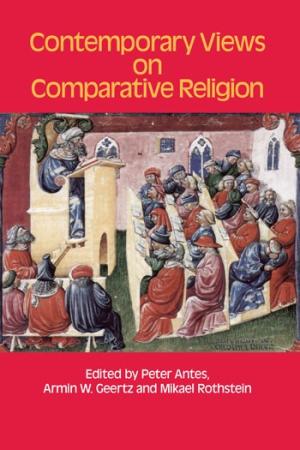
During his time on the editorial board of Teaching Theology and Religion Tim Jensen brought a distinctive, and often provocative, sensibility to that group’s discussions. Rooted in his own experience as a teacher in secondary schools and in universities, and based on his research into systems of “religion education” both in Denmark and throughout Europe, Jensen’s position vigorously argued for a strictly secular (and scientific) study of religions throughout the educational curriculum. Even when they did not carry the day, Jensen’s arguments were always “good to think with.” Although they do not focus as directly on Jensen’s teaching as they do on many of Jensen’s essays (the volume includes a bibliography of his writings), these essays honoring Jensen on the occasion of his sixty-fifth birthday address many of his persistent concerns. As an ensemble, the essays present a vision of the field of the study of religion that will challenge teachers in North America to articulate their own understandings of what the study of religion entails. More importantly for this context, several of the essays link their broad considerations of the study of religion directly to issues concerning teaching. Gustavo Benavides offers an essay that stands out in linking theoretical concerns to the classroom. He argues that whatever the subject matter may have been, at the end of the term students in any course in the study of religion “will have thought, however intermittently, about the various but nevertheless recurrent ways in which what we call ‘religion’ is generated and kept in place” (223). Beyond that broad learning goal he proposes – convincingly in my view – that “Ideally, anyone teaching a course that has to do with any of the aspects of what is generally known as ‘religion’ should be engaged in the elaboration of a theory that could accommodate – however provisionally, however tentatively – most of the topics being discussed in any given class” (225). Benavides shows clearly how conceptions of what is – and should be – involved in the study of religion is not simply the concern of a handful of scholars specializing in “theory and methods.” One’s conception of the nature and purpose of the field has a direct and pervasive impact in the classroom. Several other contributors propose interesting links between their scholarly concerns and their practice as teachers. Russell McCutcheon discusses his use of popular music videos “to illustrate the unexpected appearance of religion” (157) where it is least expected. Drawing on a thorough reading of Jensen’s own work, Wanda Alberts carefully maps out not only what “Religious Studies-based Religion Education” looks like in K-12 curricula but also how it contrasts to other, more confessional, understandings of “Religious Education” and what is at stake in the competing understandings. Satoko Fujiwara provides a persuasive account of why the “world religions” paradigm has persisted in Japanese education, linking it to a particularly Japanese understanding of Max Weber. Though this volume does not focus directly on teaching, it nonetheless provides the interested reader with both some very pointed suggestions about classroom practice and an array of essays about the state of the field that will provoke and perhaps even inspire careful rethinking about what we are teaching when we teach about religion.
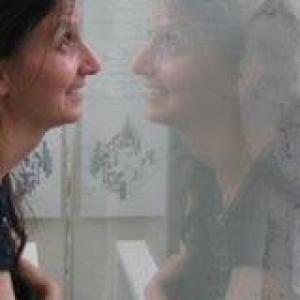
Why and how has Sufism become such a contested topic in the 20th and 21st centuries, and what does “authentic” Sufism look like today? Why are historical Sufi shrines in Pakistan, Mali, and Iraq being destroyed by Muslims? Why do some Muslim governments ban Sufi literature and persecute Sufis, at a time when Sufism has become increasingly popular in the West? Is contemporary Sufism a singular phenomenon, or is it shaped by a multiplicity of interpretive frameworks? Exploring answers to these questions requires a great deal of contextual knowledge of history and religious thought as well as identity politics, and many students feel daunted by the complex terrain of contemporary Sufism. Given the temptation to settle for simple answers, students need encouragement to engage the dynamics surrounding Sufism, and to critically examine diverse Muslim as well as non-Muslim reactions to this deeply rooted and yet creatively adaptive current arising from within Islamic spirituality and mysticism. When teaching on contemporary Sufism, I have started to explore three significant themes with my students: Sufism’s relationship to Islam and the development of anti-Sufi interpretive movements Students need to understand the contestation over Islamic authenticity among pro- and anti-Sufi Muslims, which is arguably one of the most prominent conflicts currently playing out in Muslim societies. To this end, it is essential to help the student explore Sufism’s historical shifts, by becoming familiar with unfinished debates over metaphysics, epistemology, and politics. One way to do this is to organize discussions about longstanding debates within Islamic thought, to promote familiarity with decisive historical moments for the formation of Sufi tradition as it evolved through engagement with theology and jurisprudence, in pursuit of answers to key questions: What is the nature of God? How can we gain knowledge of God? What is the nature and purpose of being human? Who inherits the founder’s authority? How does one define being Muslim? While Sufis were often careful to avoid standing outside the circle of orthodoxy, their distinctive ways of answering these questions aroused debate, particularly in relation to such controversy-inducing Quranic concepts as kashf and‘ilm ladunni, both of which relate to the attainment of unmediated spiritual knowledge and insight. By affording opportunities to examine contrasting orthodox views of Sufism or even constructing role plays or debates involving Sufi and anti-Sufi views, the teacher can create opportunities for penetrating insight into opposing interpretations grounded in divergent Islamic worldviews. By coming to understand classical debates on such topics, students will begin to grasp the backstory behind the many contradictory opinions about contemporary Sufism’s relationship to Islamic tradition and communal life. Also, by unpacking the historical antecedents for current debates, students get to understand the rise of Islam’s most sustained contemporary anti-Sufi movement, Wahhabism. Relationship Between Sufism and the West When teaching about contemporary Sufism, it is also essential to explore the historical European encounter with Sufism during the colonial period, especially as European “Orientalist” scholars were attracted to Persian poetic traditions of Shamsuddin Hafez and Sadi of Shiraz, as well as to more elaborate Sufi ritualized practices such as those of the whirling dervishes. For this theme it is important for the student to understand that Sufi tradition was not engaged solely through textual means or through translation, but also through a felt affinity among some Western thinkers for Sufi ideals and worldviews, particularly as expressed through poetry. Encounters with Sufism’s poetic spirit inspired European and American intellectuals and poets in new and fascinating ways. To illustrate, the teacher can explore with the students the lives and thought of two key literary Western figures: 1) the German author Johann Wolfgang Goethe (d. 1832), and 2) the American poet and lecturer Ralph Waldo Emerson (d. 1882). These two individuals’ engagements with Sufi poetry and personalities are exemplary illustrations of how the Sufi tradition was encountered and understood through translation, also in ways that played a formative role in European spiritual and literary movements. Through examining such impacts of Sufism on early modern European intellectual culture, the student can gain insight into contemporary understandings of Sufism in the West, and especially its presence in contemporary popular culture as reflected in the phenomenon of “Rumimania.” Gender Dynamics of Authority in Sufi Communities When teaching about contemporary Sufism, it also is very useful to explore the growing prominence of women in authoritative roles. In doing so it is important to help the student understand the “hidden” history of Sufism, in which Sufi female personalities were influential not only in current times but also in the development of the various aspects of the Sufi tradition, from developing its principles and practices to transmitting knowledge, and receiving recognition as saints, spiritual teachers, and authorities. Although the present era has offered additional opportunities for women to take on roles that were once reserved primarily for men, the contemporary period also shows great continuity with a history that includes women saints, teachers, and practitioners of Sufism. In North America, women carry forward this tradition by continuing to play important roles in Sufism’s development and in some cases even extending their roles beyond traditional boundaries. In a day and age of Islamophobia and clichéd thinking about Islam (sometimes promulgated by Muslim as well as by non-Muslim thinkers) teaching about contemporary Sufism can help to complexify and diversify students’ imaginations of Islam, particularly when such teaching actively seeks to make connections between past and present. By moving beyond more static debates about whether Sufism is or is not the heart of orthodox Islam (and either is or is not “authentic” in any given contemporary expression), teachers can show how Sufism has for centuries been central to debates over what is essential in Islam, and indeed over what Islam is. In the process, students can attain to a much richer and more dynamic understanding of Islamic tradition as well as of the encounter of Islamic and the Western polities and cultures.
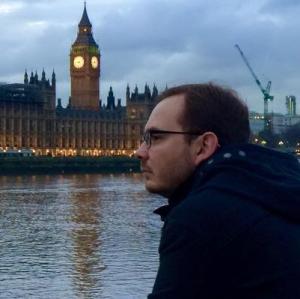
My teacher training focused on goals and assessment. When I conduct workshops on teaching and whenever I am asked for advice on teaching, I tell instructors to clarify goals and work backward. Two years ago I gave a presentation on technology in the classroom. I included a laundry list of gadgets and apps—absolutely. “Check this out!” “Look at what this website can do.” “Flip your classroom.” But behind all of the gee-whiz fascination of tech, we still had to start with goals. I believe in this approach and I believe in measuring student outcomes. But even when I was starting out as a teacher, I focused on more ambiguous questions as well. How can I build a stronger classroom community? How can I help students develop a deeper appreciation for mystical literature like The Conference of the Birds? Barbara Walvoord reports that half of public and over two-thirds of private university students identify “spiritual and religious development” as an essential goal in the religion classroom. Do I have a responsibility in this regard? How can any of this be assessed? For this blog, I want to touch on a question implied at the end of my last post: How can we teach tolerance while teaching about Islam? Such a question might fall under the broader rubric of anti-bias education. There are many resources on these topics and even though it focuses on K-12, I highly recommend the Teaching Tolerance Project of the Southern Poverty Law Center to all educators. Searching for “Islam” on their website will bring up dozens of resources and activities that can be modified for the college environment. My newest approach for cultivating compassion in the classroom comes out of the contemplative pedagogy movement. I have been recently introduced to contemplative teaching through a program sponsored by the Teaching and Learning Center at Wake Forest University. Contemplative pedagogy is contemplation in action aimed at educating the whole person with much of the same spirit as the Jesuit education I have benefitted from. It seems to me that there is often a disconnect between the abiding mission of a university and the more narrow goals alluded to above. Contemplative pedagogy aims to help educators reflect more deeply on the purposes of their teaching and it aims to help students become similarly self-aware through a range of practices including meditation, reflective journaling, deeper reading, and attentive listening. To some extent, I have always used these practices in my teaching. Respecting silence in the classroom and becoming comfortable with long pauses or “wait time” after asking a question has always been important to me. Developing an awareness of purpose in connection with goals that is transparent to students is a fundamental practice. There is no radical separation between contemplative pedagogy and what is being taught in all education programs. I do, however, believe that my new focus on contemplative pedagogy is helping me to think more holistically about such practices. I am better able to draw a connection between my approach to teaching and the moral and perceptive qualities I want to cultivate in my students. In Contemplative Practices in Higher Education Daniel Barbezat and Mirabai Bush explain, “What distinguishes the experience and integration discussed in this book is that the experience is focused on students’ introspection and their cultivation of awareness of themselves and relationship to others.” There are many ways to teach compassion through Islam. It is a central theme to Islam itself; God is compassionate and merciful. The Qur’an tells us, “What will explain to you what the steep path is? It is to free a slave, to feed at a time of hunger an orphaned relative or a poor person in distress, and to be one of those who believes and urges one another to steadfastness and compassion. Those who do this will be on the right-hand side. (Qur’an 90:12-18).” Our teaching can help students to better appreciate the vision of Islam and how it operates as a way of life for adherents. We can improve student awareness of false media representations of Muslims, help them to understand everyday prejudice faced by American Muslims, and encourage them to look at Islam from a nuanced rather than essentializing perspective. To all of this, we can add meditative exercises of care and concern meant to awaken students to their own compassion and the relationship between their learning and social responsibility. Such exercises encourage students to quiet their minds and envision the shared desire for love and kindness among human beings. The spirit of practices like this can be built into the architecture of a class. In Meditation and the Classroom, Bridget Blomfield describes how she encourages students to develop their own sense of adab in the learning environment. Translated in a variety of ways, she is using adab as “virtuous behavior” or “good manners” meant to develop the practitioner “spiritually, emotionally, physically, and intellectually.” She writes, “The practice of adab is used in the learning environment to initiate the students into a new understanding of themselves and a way to relate to others with attentive compassion.” It is an attitude of graciousness and humility that appears conspicuously absent from much of our public discourse, especially in an election year. But who bears the responsibility for answering this deficit? A share of that burden must fall on the shoulders of university educators. Returning us to the reflection on measurable goals I used to start this entry, Blomfield offers, “Educational environments often value the putting forth of more information, not the personal meaning underneath that information. I believe that intellect and spirituality are complementary, permitting students to write in a scholarly fashion while maintaining a personal and heartfelt understanding.” If we can understand ourselves, we will better understand others. If we can better understand others, we can be compassionate toward them as well. The achievement of such a goal cannot be measured out on a sheet of paper but neither can its value.
A conversation about scholarship and teaching with Dr. Roger Nam of George Fox University, Dr. Eric Barreto of Luther Seminary, and Dr. Kate Blanchard of Alma College.
A conversation about the benefits, possibilities, and challenges of teaching online with Dr. Roger Nam of George Fox University, Dr. Eric Barreto of Luther Seminary, and Dr. Kate Blanchard of Alma College.
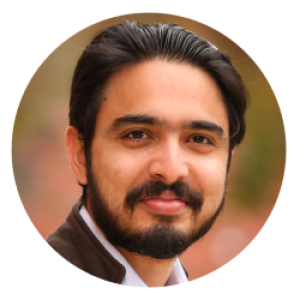
This blog builds on Caleb Elfenbein’s excellent post in this series “Scaffolding Theory at the Introductory Level.” I want to think about two interconnected issues in relation to engaging theoretical discussions in the study of Religion and the Humanities in an introductory course on Islam: 1) cultivating a practice of thinking critically about key categories like tradition, modernity, secularism etc. and 2) disrupting conventional binaries (like tradition/modernity, religion/secular) through which such categories are popularly approached. Perhaps the most difficult pedagogical task awaiting courses on religion and Islam is that of unsettling certain ingrained assumptions and attitudes that students bring to particular concepts. While dismantling common stereotypes about Islam to do with violence, patriarchy, and political repression is still reasonably doable, much harder is the task of disturbing entrenched assumptions about the presumed goodness of say modernity, secularism, pluralism and liberal democracy. This is a problem I struggle with in all my classes, not least the introductory course on Islam; in this and the next few blogs I hope to reflect on this struggle in hopefully productive ways. So what could be some effective ways to share with students in an introductory course on Islam conceptual arguments that by now are taken as established positions in Religion Studies: for instance, tradition is not the opposite of modernity, religion is not the inverse of the secular etc. Put differently, how to do theory (or conceptual interrogation) without necessarily mentioning the theorists or having undergrads suffer through theory talk? Let me share some experiences/strategies on this front from my Islam course with corresponding commentary on potential benefits and persistent obstacles. In this post, I want to focus on the first day of the semester in which an assigned reading is discussed. The task I set for this day is the interrogation of the concept of religion. I begin all my courses with chapter two of Carl Ernst’s Following Muhammad: Rethinking Islam in the Contemporary World “Approaching Islam in Terms of Religion.” This chapter charts in an eminently lucid manner major conceptual and political transformations in the category of religion over time. By comparing the understanding of religion espoused by pre-modern thinkers like Cicero (d. 43 BC) and St. Augustine (d. 430) with that of the 17th-century Dutch jurist Hugo Grotius (d. 1645), Ernst highlights profound ruptures in the early modern and modern career of religion. An earlier notion of religion, as for instance articulated by Augustine in his text Of True Religion centered as the cultivation of virtue through repetitive practice. In contrast, the modern concept of religion was marked by intensified competition over the question of authenticity (as found in Grotius’s text On the Truth of the Christian Religion). Moreover, Ernst shows that this modern competitive notion of religion was shaped in large measure by the power and politics of colonialism coupled with the activities of European missionaries who in fact used Grotius’s text as a debating manual. What I find remarkable about this text is the way it presents in simple language the key features of the world religions argument that has occupied so much of the often-dense theoretical landscape of Religious Studies. I ask students (in small group discussions) to identify and list by thinker key differences between pre-modern and modern conceptions of religion, best encapsulated in the shift from “religion” as embodied practice to “religions” as exclusive clubs reducible to distinct scriptures and competing truth claims. We also spend considerable time discussing the intimacy of a modern competitive understanding of religion and the emergence of the modern state. Particularly effective in this regard is to complement this chapter with a sample of the British census survey in late 19th century India. It is through this visually charged primary source that students really get the tectonic implications of being compelled to box one’s religious identity into one among several competing options. Also invaluable is the narrative in this chapter involving a student at the American University of Beirut who when asked to identify his religious identity in university registration forms, responds in puzzlement “But I am an atheist?” To which the registrar responds, “but are you a Christian atheist, a Jewish atheist, or a Muslim atheist.” (p. 58). This story (that we read aloud in class) brings home for students the point about a modern countable and competitive notion of religion with particularly clarity. But while students generally get the idea that meanings attached to categories like religion shift over time, they struggle to dismantle a celebratory attitude towards modernity and modern pluralism. In the Religion to Religions argument, while recognizing the problem of religions as competitive clubs, students tend to persist with the idea that having multiple religions is an achievement of pluralism in modernity. That the discourse of pluralism is itself stained with the violence of colonialism and modern state power is a point they are not quite ready to entertain. Particularly instructive in this regard is the critical attitude students often adopt towards Augustine on why his text was titled “of True Religion.” They often protest: why did Augustine not recognize (read respect) religions other than Christianity (the True Religion). The tenor of this discomfort says much about the deep internalization of liberal gestures of recognition and respect among undergrads. But despite all this, what Ernst’s chapter and starting a course with this chapter does achieve is the attunement of students to the labor of taking seriously the histories and ideological arguments invested in crucial categories of life like religion. But how can one sustain such a genealogically oriented pedagogy in discussions on more specific topics in Islam? That is what I hope to discuss in my next post on November 9th.
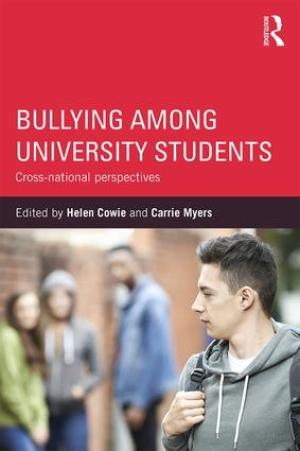
Helen Cowrie and Carrie-Anne Myers’ Bullying Among University Students studies bullying in universities worldwide, with contributors from educational psychology, criminology, counseling, media, and other disciplines. One insight of the volume is that we tend to address bullying as a relationship between the bully and the victim without addressing bullying’s social and institutional contexts. The introduction reminds us that university students occupy an ambiguous position, neither protected children nor employees. In the university, therefore, bullied students feel lost, reporting “that they do not know of any policies, systems, or avenues to help them” (3). The essays begin with the student experience, move to the nature of bullying, look at social context, suggest interventions and policies, and end with reflections, suggesting that universities might address bullying by coordinating communications between the students, staff, administrators, and student services and by using research on workplace bullying as a resource. The corporatization of higher education, valuing individualism and competition, may unconsciously generate a context for bullying, meaning that systems must be put in place to address bullying, including strong counseling. The writers align bullying with what they call “laddish” behavior – indeed, boys bully more frequently than girls – which Toni Pearce defines as a “‘pack’ mentality evident in activities, such as sport and heavy alcohol consumption and ‘banter,’ which were often sexist, misogynist and homophobic” (17-18). It includes sexualizing behavior toward women and intolerance of gay and transgender students and racial ethnic students, all vulnerable, which leads to harassment and violence. The essays examine multiple forms of bullying, including stalking and cyber-aggression, which occurs as “invisible” bullying (113). Drawing lines in these cases is a key, but difficult, act: when, for example, is online activity conversation, teasing, or bullying? One finding is that bullies tend to bully throughout their lives (36). Osman Tolga Aricak’s essay explores genetic and environmental causes of bullying and the impact on the bullies themselves. Aggression is an outward sign of complex issues like poor self- and impulse-control and narcissism. The bully and the victim can experience ongoing mental health disorders, including anxiety, depression, and isolation. “The Research Student Experience” chapter is informative for those of us supervising graduate students, unveiling the sometimes unconscious bullying in the power-laden supervisor-student relationship. Graduate students also occupy an ambiguous position, being students and teachers or workers, making them vulnerable. Graduate supervisors must be mindful of power, avoiding actions like giving excessive or unauthorized work to teaching assistants and using their research as the supervisor’s own. This collection offers immense insight into an understudied subject. One article on “Cross-Cultural Comparisons” reminds American universities that we have “some of the highest rates [of bullying] among the developed world” (135). Our cultural and economic diversity, insistence on free speech, and desensitizing media violence confuse notions regarding appropriate behaviors (135). Since there is not clear data on what works against bullying, a system-wide response is necessary.
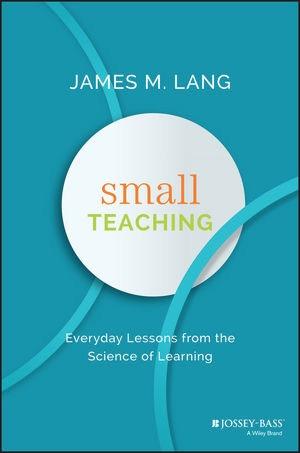
James Lang has written yet another immensely valuable book for post-secondary faculty. Using the analogy of “small ball” from baseball, the author provides classroom activities requiring only a few minutes that can easily be incorporated into a course sporadically or regularly to improve learning. Each strategy is based on the latest research about the human brain, and Lang has witnessed their “positive impact in real-educational environments” (7). The strengths of the book are numerous. First and foremost, it accomplishes the stated purpose. In each of the nine chapters, Lang explains the theory behind the learning principle, describes how the theory has been carried out in classroom models, and then summarizes the principles common in each model. Within the models, the reader finds activities that teachers can incorporate into any class and use randomly or repeatedly that enableing students to learn effectively. Second, each learning activity is transferable across academic disciplines. For example, while discussing “predicting,” the initial research example is from the field of language learning. Lang then applies the principles to his discipline of teaching literature, before concluding with a kinesthetic example of learning an athletic skill. Additionally, Lang recognizes the increasing frequency of teaching and learning online. He also notes students’ access to social media and suggests ways to use the principles and activities of online teaching and social media in a non-traditional classroom format. Finally, while the focus is on in-class actions that take minimal time, he does identify how specific teaching concepts can be incorporated into course planning and the syllabus. The book is well-organized, not only in its presentation but in the ordering of learning from knowledge acquisition to understanding to learning inspiration (motivation), with three strategies explained in each section. Each concept and activity is well-supported by research noted in a full bibliography. For example, in discussing retrieving, Lang gives examples of opening or closing questions an instructor can use in the first or last five minutes of class that will prove effective for short-term and long-term recall, in light of a variety of studies. Where there are questions about the validity of an idea or activity, Lang acknowledges the issues and interacts fairly with contrary opinion. In short, it is hard to find a negative with this book. Because each chapter is follows the pattern of theory, model, then principles, a theology or religious studies teacher can easily take the knowledge or concepts they desire to teach and adapt them to any of the teaching strategies. From a rookie faculty member experiencing challenges midway through a course to an experienced professor looking to improve student learning in a well-developed curriculum, there is something in Small Teaching for everyone. If your college cannot attend one of Lang’s professional development sessions, I would recommend academic deans purchase the book for faculty and together they could work through each chapter.
[row][column lg="9" md="9" sm="6" xs="12" ]Annual Deadlines for Submission of a grant proposal to the Wabash Center: March 1 and October 1. More information about the Wabash Center Grant Program.[/column][column lg="3" md="3" sm="6" xs="12" ][/column][/row]
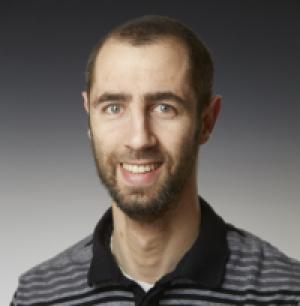
For those of us who teach on the semester system, we face the daunting task of presenting our course in about 15 weeks (and for those of us on quarter systems, about 10!). Among the greatest challenges given this context is to, therefore, decide what can and cannot be left out of a course. If one teaches “Introduction to Islam,” perhaps one aims for a semi-comprehensive historical survey where students learn a bit about hadith, law, Qur’an, theology, dynasties, mysticism—and maybe science, Islamism, and art depending on some variables. Indeed, many textbooks on Islam (books devoted to introducing college students to Islam) treat their topic like this. A fundamental question, therefore: What is the goal for a short undergraduate course on Islam? It’s perhaps a blessing and curse that any given instructor will answer this differently—based on training, institutional context, and personal taste—but I think mostly a blessing because the menagerie of reasonable answers reflects a freedom to make up our minds about approach and content. In this post, I’ll discuss a few outside-the-box approaches that reflect my ongoing struggle with making the best of a short semester. Education as freedom In his article “Liberal Education: Its Conditions and Ends,” David Corey argues that the goal of liberal education is to set us free, to achieve “intellectual freedom or, in a certain quaint sense of the word, ‘spiritual’ freedom” (2014: 195). I can jive with this, and taking a cue from JZ Smith, “there is nothing that must be taught, there is nothing that cannot be left out” of a religious studies course (2012: 13)—which seems to point to freedom as a pedagogical strategy as well. What I interpret from Smith’s prescription is that courses are short, so comprehensive surveys are false gods, in a sense. In an intro to Islam course, why, for example, would attention to a scholarly monograph on the Qur’an, prove more valuable than focusing on episodes from “Little Mosque on the Prairie”? In terms of textbooks, at least, I’m not aware, unfortunately, of any that give attention to “Little Mosque on the Prairie,” so an overreliance on textbooks could also limit the freedom of the instructor to substantively explore outside-the-box sorts of topics. Carl Ernst even notes in Following Muhammad that he hates textbooks for similar reasons; I wouldn’t go that far, in part given my distaste for the H-word, but I strongly sympathize with the sentiment. So if instructors wish freedom for their students, and hope to enjoy a comparable freedom through course design, are we talking about nothing more than a whimsical selection of material? No. It’s not whimsical because I presume, for the sake of argument, that most Islamic studies professors have reasonable training in their respective subfields. On top of that, Islamic studies is not a compartmental, marketable skill, generally speaking—which is why I’ve become increasingly persuaded by Smith’s emphasis on the nothing that cannot be left out. I actually don’t think that’s entirely true: if my course, entitled “Islam,” focused on, say, the question of whether Obama is Muslim (a totally reasonable thing to focus on in said course) to the exclusion of studying Qur’an or hadith, then I should expect to run into some legitimate problems of credibility—from students, colleagues, and my institution. But one should also note that drawing attention to Obama’s religion in light of political realities could uniquely intrigue and teach students. Freedom to surprise students Although I do spend more time in my courses focusing on the Qur’an than on Obama’s public commitment to Christianity, I can’t be sure what will impress students more, years after the class is over—that the story of Khidr is super interesting and weird, that Thomas Jefferson may have read it in Arabic, or that 30% of Americans actually think Obama is a Muslim. Questions of Obama’s religion (or attention to “Little Mosque on the Prairie”), moreover, address critical contemporary questions of Islamophobia, racism, and immigration—topics that could take a bit more creativity to excavate from Moses and Khidr. But can we have it both ways, focusing on Muslim sitcoms as well as the Qur’an? Absolutely, but we still have to prioritize, and if we include one thing we’ll probably have to exclude something else. It’s a balancing act at the end of the day and each of us will rightly navigate things differently. As much as students may find reason to take interest in Obama’s religion—and the story of Khidr—the topic of drugs usually catches their attention as well. And the histories of coffee, alcohol, and qat all squarely tie into broad global discourses such as the consequences of intoxication, state law and sharia, and capitalism. Because I spent a summer in Yemen, and because college students already have a stake in coffee and alcohol, these three substances make regular appearances in a weeklong unit on drugs in Islam. After reading an entire book about the subject—Tripping with Allah, by Michael Muhammad Knight—I ran into a compelling erotic scene involving a vision of Ali and Fatima during Knight’s experience with ayahuasca-DMT (one of the most powerful psychedelics known to science). So I included the excerpt in my “Islamic Mysticism” course last semester. One student memorably lamented her foreseen absence on the day we would discuss Knight’s chapter, writing, “I am disappointed I will be missing today’s discussion of our very weird reading.” Beyond the edutainment factor, the chapter with the erotic scene, like much of Knight’s writing, points clearly to other big questions about Islam, such as Sunni-Shi‘i divides and the boundaries of orthodoxy. So as much fun as it would be to assign the excerpt to students for shock value alone, my pedagogical justification lurks steadily under the surface. Conclusions In my own context, I teach religious studies courses at a college with very few RS majors (currently two, to be precise). As part of the core curriculum, however, students must take at least two courses in my department. Although I always welcomed the challenge of teaching students who are there “because they have to be,” and similarly always valued a liberal arts education, it was not always clear to me how to implement my vision of the liberal arts into my courses. I’ve felt stuck in the ostensibly impossible expectation to teach a survey. What I have increasingly come to ask, though, is what kind of impression my course will leave on students years down the road. And as I continue to ask this question, I become increasingly convinced there’s precious little that cannot be left out of curricula in my courses on Islam. If the goal of learning in my courses is to cultivate intellectual freedom, then is it not only appropriate but even desirable to reflect my own engagement with intellectual freedom, synthesis, and experimentation (cue the DMT jokes) in the syllabus and curriculum itself?
Wabash Center Staff Contact
Sarah Farmer, Ph.D
Associate Director
Wabash Center
farmers@wabash.edu